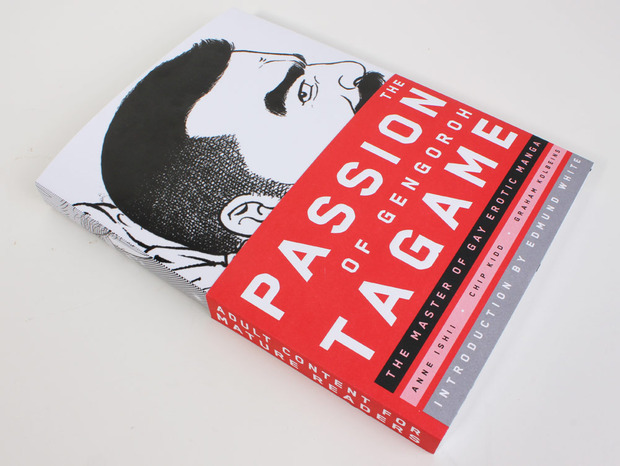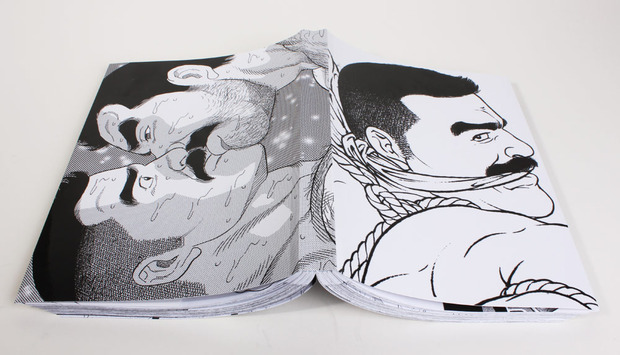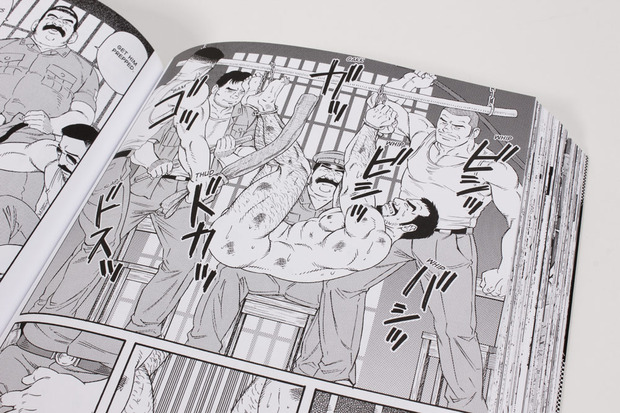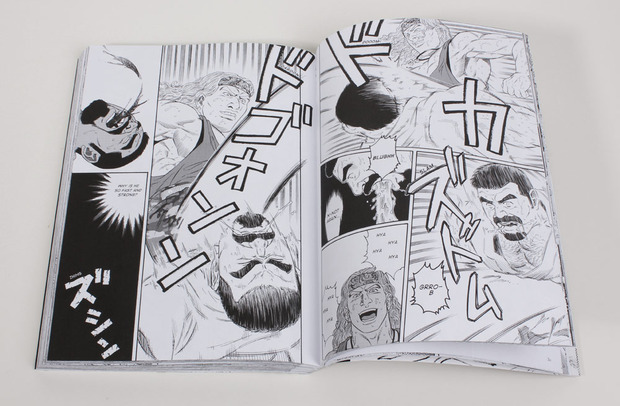The Passion of Gengoroh Tagame
Chip Kidd discusses designing the first English-language collection from “the master of gay erotic manga”


In book design, provocation is the name of the game. Intrigue the reader enough to pick up the work and open it—this is a process that Chip Kidd has turned into an art. From David Sedaris’ “Naked” to the English-language version of Haruki Murakami’s “1Q84,” Kidd has mastered the principle of intrigue. But how do you apply this to the work of Gengoroh Tagame, the Japanese manga artist who specializes in BDSM themes and violently graphic gay erotica? For “The Passion of Gengoroh Tagame,” Kidd joined up with collaborators Anne Ishii and Graham Kolbeins to devise a way to introduce the English-speaking world to the “Tom of Finland” of Japan.

“Gypsy Rose Lee was the genius at this—you don’t want to give them the money shot on the cover.”
“It’s a tease,” says Kidd of the book’s initial impression. “You see the image and read the band and you get it. If you’re into really graphic gay sex, then this is for you. If you don’t, then it isn’t. The red band is inspired by traditional Japanese book design, which has an obi around it, so it’s not about censorship. Gypsy Rose Lee was the genius at this—you don’t want to give them the money shot on the cover. You want to titillate, and if they find what’s on the cover titillating then they slip it off and look inside. If they want more graphic sexual material, then they’re rewarded right away.”

Kidd explains that his first exposure to Tagame’s work came during a tour of gay Tokyo in 2001. Finding the comics in a bookstore, Kidd continued to follow Tagame’s work through the years, although they remained hard to find. The quality of the artwork and the desire to grow Tagame’s audience were both reasons for wanting to publish the book, but that wasn’t all. “It was as much a selfish thing as anything else. I wanted to read it in English,” he says. “His work really appeals to you or it really doesn’t, and it really appealed to me. I don’t know how else to explain it. I like Tom of Finland but I never felt engaged by it—it always felt pedestrian to me.”

Having designed numerous comic books in the past, including “Bat-Manga: The Secret History of Batman in Japan,” Kidd was met with familiar challenges. Laying out the book from back to front and other technical demands were handled for the most part by Graham Kolbeins. Anne Ishii, who had worked as translator with Kidd on Bat-Manga, also translated Tagame’s stories.
Collectively, they were were drawn together by a desire to bring the work from Japanese basement bookstores to an English readership. “I like to champion what I see as really well-done comics, and that’s what this is,” Kidd says. “Clearly it’s not for everybody, but at least now it’s available.”

Graphic as Tagame’s work is, Kidd places the art high above its competitors. “The drawing transcends our idea of pornography as cheap and dashed off,” he explains. “That’s not what this is. This whole role reversal of dominant alpha males completely made submissive and humiliated is fascinating to me. It’s not something you see a lot of in popular culture.”
“The Passion of Gengoroh Tagame” is available through Picture Box and on Amazon.
Images of the book by James Thorne












